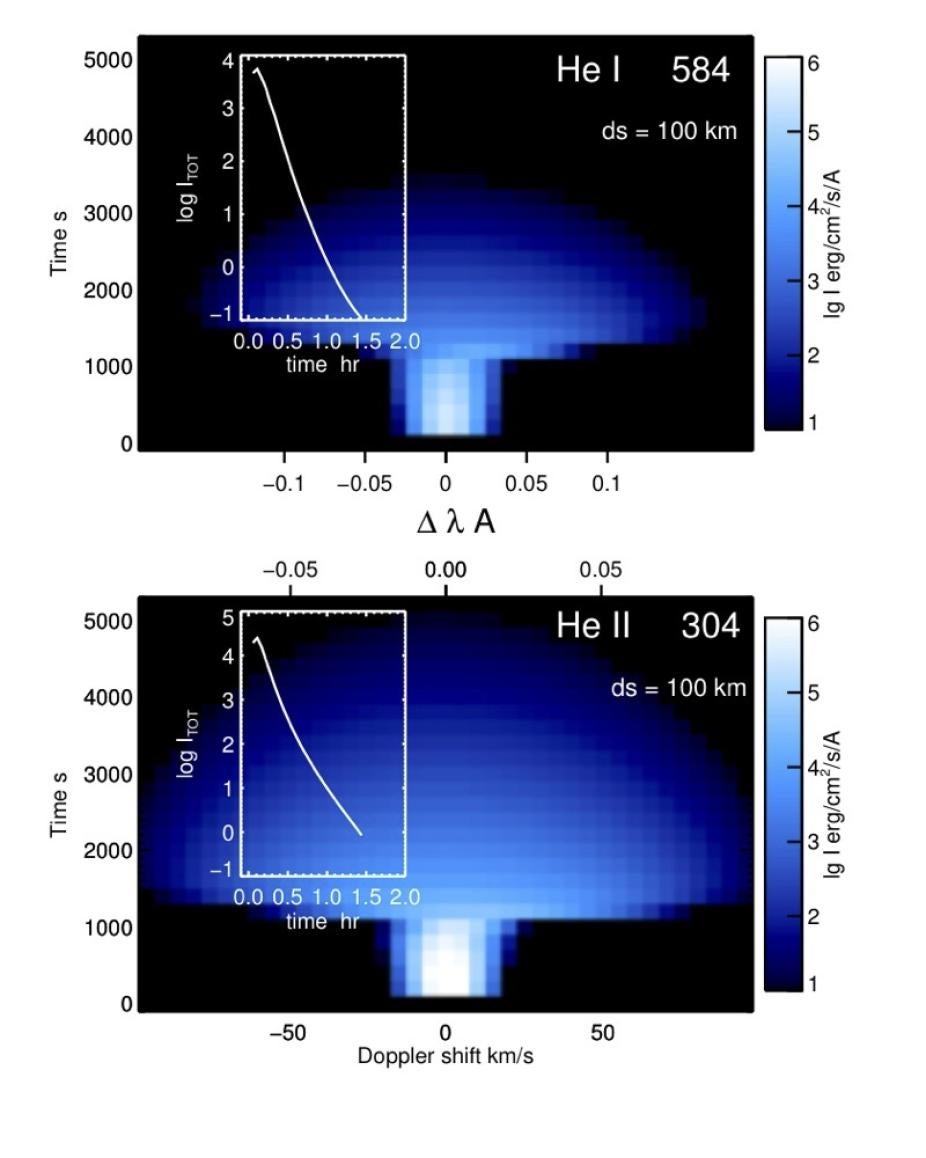Publication Name: MNRAS; First HAO Author's Name: P. Judge
In the context of the solar atmosphere, we re-examine the role of of neutral and ionized species in dissipating the ordered energy of intermediate-mode MHD waves into heat. We solve conservation equations for the hydrodynamics and for hydrogen and helium ionization stages, along closed bundles of magnetic field.

Line profiles of He I and He II resonance lines are shown as a function of wavelength (and equivalent Doppler shift) and time, computed from a coronal initial state. The long-term evolution is controlled only by ion-neutral collisions which serve to dissipate a modest flux of energy in intermediate MHD waves.
First, we examine the evolution of coronal plasma under conditions where coronal heating has abruptly ceased. Surprisingly, we find that cool (< 0.1 MK) structures are formed lasting for several hours. We find that MHD waves of modest amplitude can heat the plasma through ion-neutral collisions with sufficient energy rates to support the plasma against gravity. Then we examine a calculation starting from a cooler atmosphere. Remarkably the calculation shows that warm (> 10,000 K) long (> several Mm) bundles of plasma arise by the same mechanism. We speculate on the relevance of these solutions to observed properties of the Sun and similar stars whose atmospheres are permeated with emerging magnetic fields and stirred by convection. Perhaps this elementary process might help explain the presence of “cool loops” in the solar transition region and the production of broad components of transition region lines. The production of ionized hydrogen from such a simple and perhaps inevitable mechanism may be an important step towards finding the more complex mechanisms to generate coronae with temperatures in excess of 1 MK, independent of a star’s metallicity.